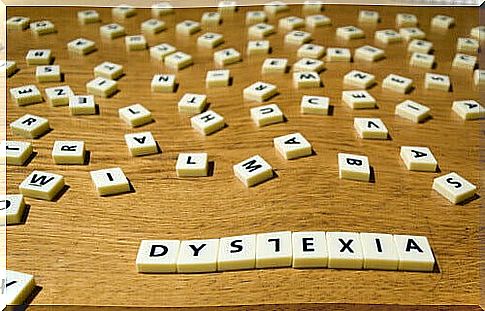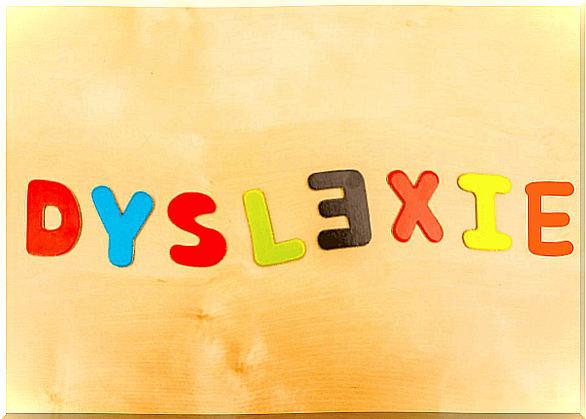3 Types Of Dyslexia

Dyslexia is a disorder that affects the ability to read and understand written language. This disorder involves difficulty in reciting the alphabet, naming letters, and analyzing and classifying sounds. In addition, at the level of dyslexia, we frequently find omissions, substitutions, distortions, inversions or additions, slowness, hesitations with visual monitoring problems and a deficit of comprehension. All of this does not look the same and that is why we can talk about different types of dyslexia.
To understand the different types of dyslexia, one must understand that there is a two-way process in reading. This means that our brain has two ways of reading words: a visual way and a phonological way. The first, the visual way, consists in reading the words as a whole, having recourse to memory through its superficial aspects; this can only be done with familiar words because unfamiliar words are not stored in memory. The phonological path would involve reading through a grapheme-phoneme transformation, one by one; this is very useful for reading unfamiliar words.
If any of these pathways are damaged, it will drift into a particular dyslexia. In this article, we are going to talk about the different types of dyslexia that arise when certain reading features are affected. We will study superficial dyslexia, phonological dyslexia and deep dyslexia more concretely.

Types of dyslexia
Superficial dyslexia
People with superficial dyslexia have a selective disability in their ability to read words with irregular pronunciation. This is a type of dyslexia that does not appear in all languages, as not all have words with irregular pronunciation. For example, Spanish does not have one, while English does. One manifestation of this dyslexia is found in the difficulty of pronouncing “steak” (irregular) in front of “speak” (regular).
Superficial dyslexia is related to a problem with the visual path or direct access to words. People can read regular words perfectly, through individual grapheme-to-phoneme translation; however, with irregular words, this strategy is not useful. People also have no problems reading non-existent words or “pseudo-words”, which is further evidence of a problem with the direct access route.
Another key aspect of this dyslexia is that the semantic capacity is not affected. If people cannot read a word correctly, they can still understand it if it is pronounced aloud correctly. The problem therefore concerns only the reading ability of the subject.
Phonological dyslexia
People with phonological dyslexia have a selective impairment in the ability to read unfamiliar words or “pseudo-words”, while their ability to read familiar words is maintained. For example, they would have a hard time reading “love” but could read the word “love” without any problem.
This shows us that the damaged path is the phonological path. Therefore, people who suffer from phonological dyslexia would be unable to translate words from grapheme to phoneme. It would therefore be difficult for them to read these unfamiliar or non-existent words that would not be familiar. On the other hand, since the direct path is intact, they would not have a problem when reading known or familiar words.
In these patients, we also find difficulty in reading functional words (the, that, a, in front…). This is probably due to the fact that they are very abstract and lack solid content. Even so, the research results are quite confusing; one should be careful with phonological dyslexia as there may be more problems than those which directly affect the phonological pathway.

Deep dyslexia
At first glance, it would seem that superficial dyslexia and phonological dyslexia exhaust the possibilities of the consequences of a lesion in a dual pathway model. However, there is a dyslexia that is found a little further down in the dyslexia types, quite surprisingly, which is deep dyslexia. Despite its similarities to phonological dyslexia, it has one defining characteristic which is semantic paralexy.
Semantic paralexy takes place when the subject, instead of reading the written word, produces a different word but with a meaning related to the original word. For example, before the word “son”, the patient is likely to say the word “brother”. This is a very interesting phenomenon which indicates to us the existence of lesions when determining the semantics of words.
Another key aspect that shows us the semantic damage is that the imaginability of the word shows the degree of difficulty in reading. In other words, for concepts at which it is difficult to construct a mental image, there will be a lower reading performance; on the other hand, these concepts which are easy to imagine mentally will facilitate the reading performance. This shows us that there are difficulties when looking for the word in a semantic network. Therefore, the more mental data we have, the easier it will be to locate and read it.
Dyslexia is a complex disorder that gives us a great deal of information about how our ability to relate to language works. Understanding the different types or categories helps us understand the structure and functionality of the language. It is for this reason that exhaustive study and research are essential if we are to understand more deeply the foundations of communication and detect the origin of possible faults in it.










